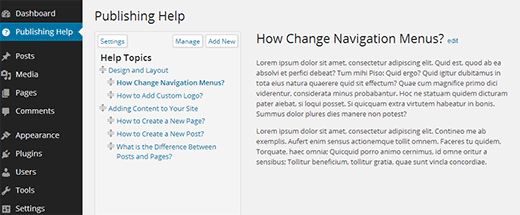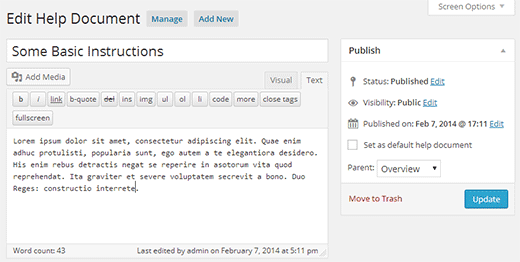Are you a freelancer, consultant, or someone who manages a multi-author WordPress site? If so, then you already know what it feels like to explain the same things repeatedly to your clients and users. One of the ways to solve this problem is by providing great help resources and documentation. In this article, we will show you how to add a help section in WordPress admin area with useful articles and resources.

Who Needs This Help Section?
People who create websites, themes, plugins, and administrators of multi-author WordPress sites. If your users are asking similar questions, then you need to add documentation to your site or in your product. This will allow you to save time and keep your sanity.
For example, on a multi-author WordPress site you can add the help section to let authors know how they should format and style their posts, how to optimize images, and what things they should avoid.
These help sections make it easy for new team members to join and adjust to the workflow.
If you are a WordPress developer, then you can use the help section to let clients know about the features of their new site, how they can customize or make changes, and where they should look for more help.
A lot of WordPress developers and site owners create help section and link to our beginner guides, WordPress tutorials, and WordPress videos.
Video Tutorial



